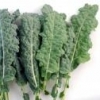Ooops. Tamoxofen is indeed a SERM, as may be resveratrol. I don't have reports of Vitamin D
vis a vis Tamoxifen induced arthalgia (joint pain) which has been reported to occur with generic Tamoxifen, but not with the patented drug. Anti-aromatase therapy is frequently an adjuvant or replacement therapy for Tamoxifen, and joint or muscle pain if a frequently reported side effect, one that seems to be coorelated with hydroxy D-25 status.
....
Do you have any source re. the coprescription of vitamin D for SERM or anti-aromatase joint pain? I've never heard of it, and I can't imagine how vitamin D would help a problem caused by too little estrogen.
Here's one:
Cancer Nurs. 2009 Mar-Apr;32(2):143-50.
Vitamin D insufficiency and musculoskeletal symptoms in breast cancer survivors on aromatase inhibitor therapy.
Waltman NL, Ott CD, Twiss JJ, Gross GJ, Lindsey AM.
College of Nursing, University of Nebraska Medical Center, Lincoln, NE, USA.
Abstract
Breast cancer survivors (BCSs) on aromatase inhibitor (AI) therapy often experience musculoskeletal symptoms (joint pain and stiffness, bone and muscle pain, and muscle weakness), and these musculoskeletal symptoms may be related to low serum levels of vitamin D. The primary purpose of this pilot exploratory study was to determine whether serum levels of 25-hydroxyvitamin D (25[OH]D) concentration were below normal (<30 ng/mL) in 29 BCSs on AI therapy and if musculoskeletal symptoms were related to these low vitamin D levels. The mean (SD) serum 25(OH)D level was 25.62 (4.93) ng/mL; 86% (n = 25) had levels below 30 ng/mL. Patients reported muscle pain in the neck and back, and there was a significant inverse correlation between pain intensity and serum 25(OH)D levels (r = -0.422; P < .05 [2 tailed]). This sample of BCSs taking AIs had below normal levels of serum 25(OH)D despite vitamin D supplements. This is one of the few studies to document a significant relationship between vitamin D levels and muscle pain in BCSs on AI therapy. Findings from this pilot study can be used to inform future studies examining musculoskeletal symptoms in BCSs on AI therapy and relationships with low serum levels of vitamin D.
PMID: 19125120
If resveratrol indeed inhibits healing, for example by inhibiting platelet activity or disrupting the regulation of angiogenesis, to me that would be a more convincing explanation of the tendinitis, especially since most of the complaints are from people who exercise, whereas sedentary resveratrol users seem to seldom complain of tendon pain.
We've had non-exercisers complain of such pain, and exercisers who did not experience such pain. Moreover, improving vitamin D status has alleviated such pain in many of those who reported it.
Resveratrol has an IC50 of 80 microM (PMID: 20558073) which would categorize it as a weak aromatase inhibitor, weaker by a factor of ten compared to more effective compounds. However, resveratrol is converted
in vivo to piceatannol by the cytochrome P450 enzyme CYP1B1.( PMID: 11875742 ) Piceatannol has much stronger activity than resveratrol by several measures, including anti cancer-activity and SIRT1 activation. I do not know Piceatannol's IC50 as an aromatase inhibitor, but it might account for some of what we are seeing. If anyone can find it, I'd be interested in seeing it. Different reactions to reseratrol may also be due to genetic polymorphisms such that the enzyme is more or less efficient in different people.
A good many body building sites seem to think resveratrol is a potent enough anti-aromatase to recommend it. Not the most reliable endorsement, true, but their anecdotal reports are sometimes accurate.
Edited by maxwatt, 10 February 2011 - 02:31 AM.

















































